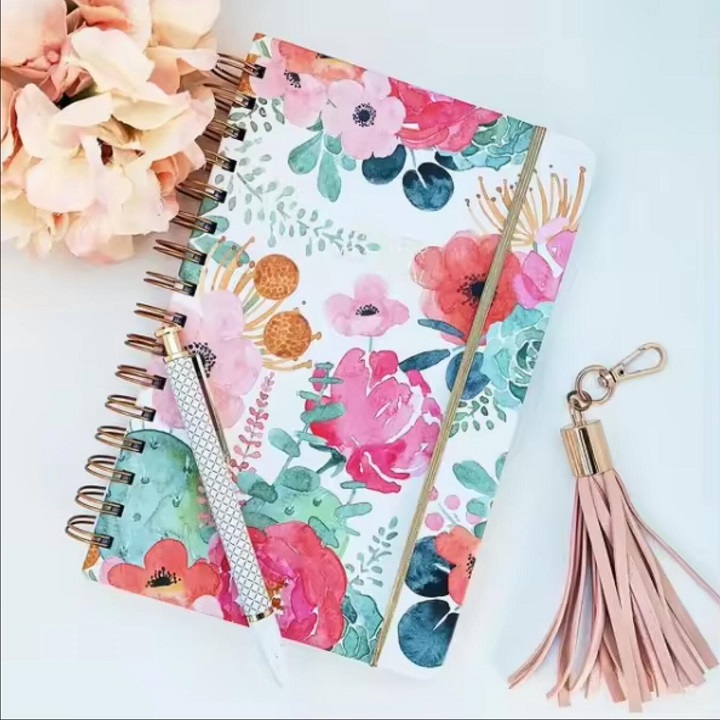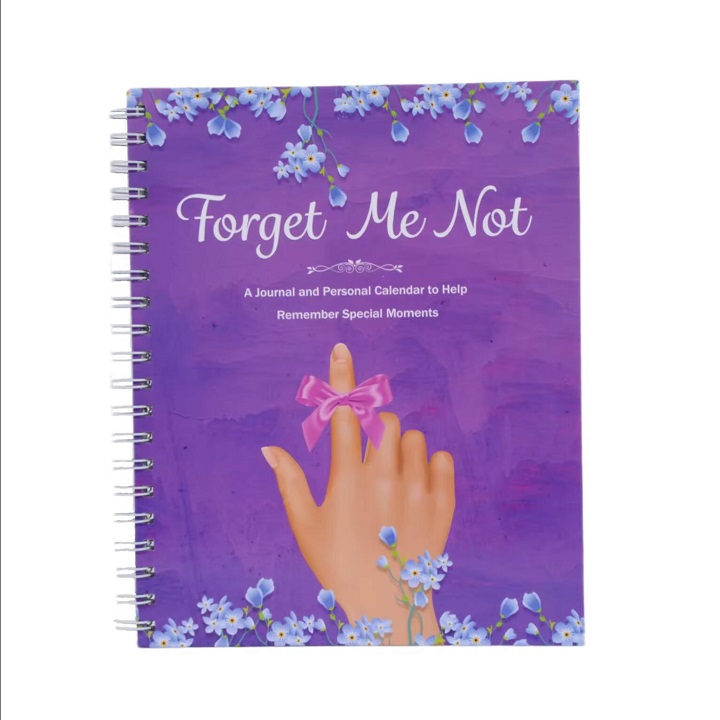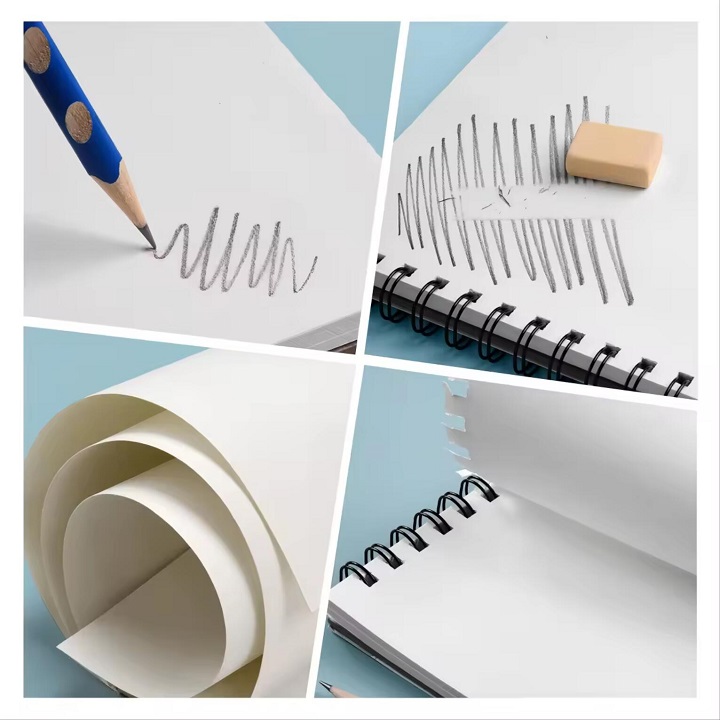Content Menu
● What Is Wire-O Binding?
● Applications of Wire-O Bound Books
● Design Considerations for Wire-O Binding
● Wire-O vs. Other Binding Methods
● Understanding Wire-O Specifications
● Sustainable Options in Wire-O Binding
● Common Questions About Wire-O Binding
● Conclusion: Why Choose Wire-O Binding?
Wire-O bound books have become a cornerstone for professionals seeking durable, functional, and visually appealing document solutions. This binding method, also known as twin loop, double-loop, or wire binding, utilizes metal double-loop wires to secure pages, providing a superior combination of practicality and aesthetic appeal. The ability to rotate pages a full 360 degrees and lay flat makes Wire-O binding a favorite across industries. Let’s dive into its features, various applications, critical design considerations, and address common questions to understand why Wire-O binding stands out.
What Is Wire-O Binding?
Wire-O binding is a sophisticated technique that involves threading pre-formed metal wire loops through precisely punched square or round holes along the document's spine. These wires are then mechanically clamped to form a secure and visually neat spine. This binding allows pages to rotate freely and remain open without additional support. Unlike plastic spiral binding, Wire-O offers enhanced durability and a professional look that is well-suited for business reports, high-end manuals, and elegant calendars.
Key Features
Lay-flat Design: Pages lay completely flat when open, making them ideal for reference materials such as workbooks, cookbooks, or instruction manuals where users need to have their hands free.
360-Degree Rotation: This allows pages to be folded back completely, providing ease of use for planners, sketchbooks, and presentations where space efficiency is crucial.
Customizable Colors: Available in a variety of colors including standard black, white, and metallic options, allowing for customization to match specific branding guidelines.
Page Capacity: Accommodates a wide range of page counts, typically from 12 to 400 pages, depending on the wire gauge and document thickness. This makes it versatile for both small and large documents.
Close-up of Wire-O coils in multiple colors. Wires in black, silver, and gold colors are shown, highlighting the customization options.

Applications of Wire-O Bound Books
Wire-O binding shines in situations requiring frequent handling or a visually appealing presentation. Here's a detailed look at specific use cases:
| Use Case | Examples | Benefits |
| Professional Reports | Business presentations, annual reports | Offers a durable spine, maintaining a polished look even with frequent use. Enhances the perceived value and professionalism of the document. |
| Educational Materials | Workbooks, training manuals | Lay-flat pages allow for easy note-taking and referencing during study sessions. Ensures the material remains accessible and user-friendly. |
| Creative Projects | Sketchbooks, photo albums | Supports thick inserts, such as photos or artwork, and accommodates tab dividers for organizing different sections. Perfect for creating custom, high-quality portfolios. |
| Functional Tools | Calendars, planners | The 360-page rotation allows easy flipping and writing on any page without obstruction. Enhances the usability and longevity of daily-use tools. |
| Cookbooks | Recipe books | Lay-flat design ensures the book stays open on the desired page, making it ideal for use in the kitchen. Easy to clean, durable materials can be used for the cover to protect against spills. |
| Marketing Materials | Product catalogs, promotional booklets | Creates a lasting impression with a high-quality finish. Wire-O binding allows for creative designs and layouts, enhancing the visual appeal and effectiveness of marketing materials. |
| Service Manuals | Technical guides, repair manuals | Durable and easy to navigate, making it suitable for environments where the manual needs to withstand frequent use. Lay-flat design helps technicians keep their hands free while consulting the manual. |
| Journals and Diaries | Personal diaries, travel journals | Provides a premium feel and allows for easy writing on any page. The ability to lay flat is perfect for personal reflection and creative expression. |
Lay-flat workbook with annotations. The image shows a person writing in a workbook that is laying flat on a desk, demonstrating the ease of use.
Design Considerations for Wire-O Binding
To maximize the impact and functionality of your Wire-O bound project, consider the following design elements:
Margins: Ensure a minimum margin of 5 mm (0.2 inches) on the bound edge to accommodate hole punching. This prevents text or images from being cut off during production.
Avoid Cross-Page Images: Because of the gap between pages in Wire-O binding, avoid designs that require images to flow seamlessly across two facing pages. This disruption can detract from the overall visual experience.
Cover Materials: Opt for durable materials such as vinyl, laminated cardstock, or even specialty papers for added protection and a premium feel. The cover is the first point of contact, so it should be both aesthetically pleasing and robust.
Spine Limitations: Wire-O binding does not allow for printing on the spine due to the presence of the wire loops. Instead, focus on creating an impactful cover design that communicates the document's purpose and brand identity.
Paper Weight: Consider the weight of the paper used inside the book. Heavier paper stock can enhance the durability and tactile feel of the document, especially in high-use scenarios.
Tab Dividers: Wire-O binding is excellent for incorporating tab dividers, which can help organize content and make it easier to navigate different sections of the document.
Custom tab dividers in a Wire-O manual. The image shows a close-up of a manual with brightly colored tab dividers, highlighting the organizational benefits.

Wire-O vs. Other Binding Methods
Understanding the differences between Wire-O and other binding methods can help you make the best choice for your specific needs:
Spiral Binding (Coil Binding): Uses plastic or metal coils that are spiraled through punched holes. It’s less formal than Wire-O but offers more flexibility for very high page counts.
Comb Binding: Employs plastic spines with teeth that snap into rectangular holes. It’s cost-effective but less durable, and the spines are prone to breaking.
Saddle Stitching: Involves folding sheets of paper and stapling them through the fold line. It’s limited to thin booklets and pages cannot lay flat.
Perfect Binding: Pages are glued together at the spine, creating a flat, professional finish. Ideal for books and magazines but doesn't offer the lay-flat benefit of Wire-O.
Case Binding (Hardcover): The most durable and high-end option, where the book is sewn together and attached to hard covers. It's expensive but provides a premium feel and long-lasting durability.
Wire-O binding offers a compelling middle ground, balancing professionalism, functionality, and durability. It's particularly well-suited for documents that require frequent use and a polished appearance.
Side-by-side comparison of Wire-O and spiral-bound books. Wire-O looks more sleek and professional compared to the more casual spiral-bound book.
Understanding Wire-O Specifications
To ensure you get the most appropriate Wire-O binding for your project, it’s essential to understand the common specifications:
Wire Diameter: The diameter of the wire used will depend on the thickness of the book. Thicker books require a larger diameter wire to ensure secure binding.
Wire Pitch: The wire pitch refers to the spacing between the loops. Common pitches include 3:1 (3 holes per inch) and 2:1 (2 holes per inch).
Hole Shape: Holes can be either round or square. Square holes tend to provide a more secure hold compared to round holes.
Wire Color: As mentioned, wires come in various colors. Selecting the right color can enhance the overall aesthetic of your document.
Finishing: The wires are usually finished with a coating that protects against rust and wear, ensuring longevity.
Sustainable Options in Wire-O Binding
In today's eco-conscious world, sustainability is increasingly important. Consider these eco-friendly options when choosing Wire-O binding:
Recycled Paper: Opt for paper made from recycled content. This reduces the demand for virgin paper and minimizes environmental impact.
Eco-Friendly Inks: Use vegetable-based or water-based inks instead of traditional petroleum-based inks.
Recyclable Wires: Some manufacturers offer Wire-O wires made from recyclable materials.
Minimalist Design: Reduce ink usage by adopting a minimalist design approach. This not only looks modern but also helps minimize environmental footprint.

Common Questions About Wire-O Binding
1. How durable is Wire-O binding?
Wire-O binding is exceptionally durable due to the metal wires used, which resist wear and tear. This makes it an excellent choice for manuals, reference guides, and other documents that are handled daily.
2. What's the maximum page count for Wire-O binding?
The maximum page count typically ranges up to 400 pages, although thicker books may require larger wire gauges to ensure a secure bind. It’s always best to consult with your printing service to determine the best option for your specific document.
3. Can I use colored wires for Wire-O binding?
Yes, Wire-O wires are available in a variety of colors, including black, white, silver, gold, and custom colors, allowing you to align the binding with your branding and design preferences.
4. Is Wire-O binding suitable for cookbooks?
Absolutely! The lay-flat pages and durable binding make Wire-O an ideal choice for cookbooks. It allows users to keep the book open on the desired recipe while cooking, and the binding is sturdy enough to withstand frequent use in the kitchen.
5. Is Wire-O binding cost-effective for small print runs?
Wire-O binding is generally cost-effective for small to medium print runs. While the initial setup costs may be higher compared to some other binding methods, the durability and professional appearance often justify the investment. Bulk orders typically reduce the per-unit costs.
Conclusion: Why Choose Wire-O Binding?
In summary, Wire-O binding provides a versatile and professional solution for a wide array of document needs. Its durability, lay-flat design, and ability to accommodate tab dividers make it superior for educational materials, business reports, creative projects, and functional tools. By carefully considering design elements and understanding the specifications, you can leverage Wire-O binding to create high-quality, user-friendly documents that leave a lasting impression.































